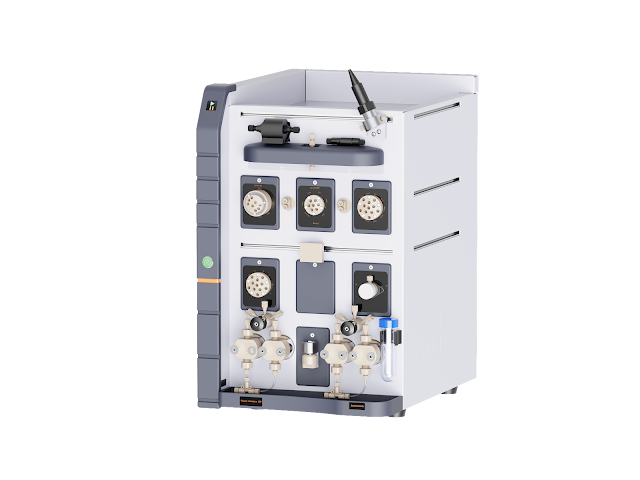Bridging the Frontiers of Science: Oligonucleotide Synthesis and Protein Purification
Imagine the potential of manipulating genetic sequences with pinpoint accuracy or isolating a single protein from a myriad of cellular components. These feats, once considered science fiction, are now commonplace in modern laboratories, thanks to advancements in oligonucleotide synthesis and protein purification. These technologies are fundamental to biochemistry and molecular biology, driving innovations in medical research, diagnostics, and therapeutics.
The Science of Oligonucleotide Synthesis
Oligonucleotide synthesis involves creating short sequences of nucleotides, the building blocks of DNA and RNA. These synthetic oligonucleotides are essential tools in genetic research, diagnostics, and therapeutics. By designing specific sequences, scientists can study gene function, develop genetic tests, and create treatments for various diseases.
The process of oligonucleotide synthesis typically involves automated synthesizers that assemble nucleotides in a predetermined order. Each nucleotide is added step-by-step, and the growing chain is protected chemically to prevent unwanted reactions. Once the sequence is complete, the protecting groups are removed, and the oligonucleotide is purified. This high-precision process ensures that the oligonucleotides are accurate and effective for their intended applications.
Applications and Significance of Oligonucleotide Synthesis
The applications of oligonucleotide synthesis are vast and impactful. In research, synthetic oligonucleotides are used in PCR (polymerase chain reaction) to amplify DNA sequences, enabling detailed genetic studies. They are also employed in the development of probes and primers for detecting specific genetic markers associated with diseases. In therapeutics, antisense oligonucleotides can target and modulate gene expression, offering potential treatments for genetic disorders and cancers.
The ability to synthesize oligonucleotides with high accuracy and specificity has revolutionized molecular biology. It allows scientists to explore genetic mechanisms at a granular level, facilitating breakthroughs in understanding disease pathways and developing targeted therapies. The precision of oligonucleotide synthesis is crucial for the success of these applications, underscoring its importance in modern science.
The Art of Protein Purification
Protein purification is the process of isolating a single type of protein from a complex mixture, such as a cell lysate. This process is essential for studying protein structure and function, which are fundamental to virtually every biological process. Purified proteins are used in a wide range of applications, including enzymatic assays, structural biology, and the development of therapeutics.
The process of protein purification involves several steps, including cell lysis, centrifugation, and chromatography. Each step is designed to separate the target protein from other cellular components based on its unique properties. Chromatography techniques, such as affinity chromatography, ion exchange chromatography, and size exclusion chromatography, are commonly used to achieve high-purity protein preparations.
Applications and Significance of Protein Purification
The ability to isolate pure proteins is crucial for scientific progress. Researchers can study the protein’s role in cellular processes, its interactions with other molecules, and its potential as a drug target. Without protein purification, it would be nearly impossible to conduct these detailed analyses. Purified proteins are also essential for pharmaceutical manufacturing, ensuring that medicines are safe and effective.
In structural biology, purified proteins are used to determine the three-dimensional structures of proteins and protein complexes. This information is vital for understanding how proteins function at a molecular level and for designing drugs that can modulate their activity. In enzymology, purified proteins are used to study enzyme kinetics and mechanisms, providing insights into how enzymes catalyze biochemical reactions. The precision and reliability of protein purification are crucial for these applications, highlighting its importance in research and industry.
Integrating Oligonucleotide Synthesis and Protein Purification
The integration of oligonucleotide synthesis and protein purification in a laboratory setting enhances the capability to conduct advanced biotechnological research. For example, synthesized oligonucleotides can be used to clone and express specific proteins, which are then purified for further study. This combination accelerates the pace of research and development, facilitating the creation of new diagnostics and therapeutics.
Future Prospects and Innovations
The future of oligonucleotide synthesis and protein purification looks promising, with ongoing advancements aimed at increasing efficiency, accuracy, and accessibility. Innovations in automation and digital technology are expected to further streamline these processes, making them more user-friendly and cost-effective. As our understanding of genetics and protein chemistry deepens, these technologies will undoubtedly play a crucial role in the next generation of medical and scientific breakthroughs.
Conclusion
For those interested in exploring the latest advancements in oligonucleotide synthesis and protein purification, Inscinstech.com.cn provides a wealth of information and resources. This platform offers detailed insights into the technologies shaping the future of biotechnology, helping researchers and industry professionals stay informed and competitive. By visiting Inscinstech.com.cn, you can gain access to expert knowledge and tools essential for pioneering work in molecular biology and biochemistry.


.jpg)

Comments
Post a Comment